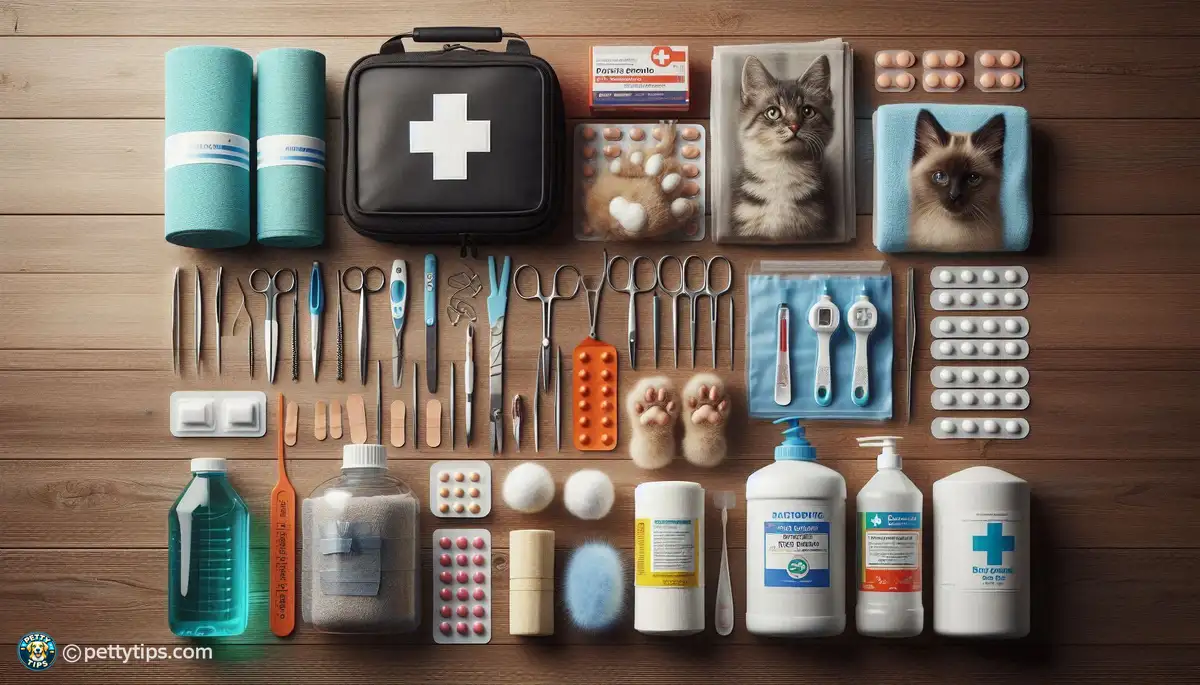- Home
- Pet Health and Wellness
- Essential First Aid Kit Items for Pets
Essential First Aid Kit Items for Pets

Preparing for Emergencies
preparing for emergencies is just as crucial for our furry friends as it is for us. As pet owners, we understand that accidents can happen at any time, whether it's a sudden injury during playtime or an unexpected illness. That's why having a well-stocked first aid kit for your pets is essential. It not only allows you to provide immediate care during emergencies but also gives you peace of mind knowing that you're prepared to handle any situation that may arise.
Quick Response Saves Lives
When it comes to pet emergencies, time is of the essence. Having the right supplies readily available can make all the difference in the outcome. Whether it's cleaning and dressing a wound, administering medication, or stabilizing your pet until you can get them to the vet, a properly stocked first aid kit ensures that you can respond quickly and effectively. Remember, in emergencies, every second counts, and being prepared can save lives.
A Necessity for Every Pet Owner
As responsible pet owners, it's our duty to ensure the safety and well-being of our furry companions. While we hope that we never have to use it, having a pet first aid kit is non-negotiable. Accidents can happen anywhere, whether you're at home, on a hike, or traveling with your pet. By having a comprehensive first aid kit on hand, you can be proactive in protecting your pet's health and providing them with the care they need in times of crisis.
Building Your Pet First Aid Kit
Basic Supplies
Every pet first aid kit should contain a variety of basic supplies to address common pet injuries and ailments. These include gauze pads, adhesive tape, scissors, and tweezers for wound care and bandaging. Additionally, include disposable gloves to protect yourself from bodily fluids and prevent cross-contamination.
Antiseptics and Cleansers
Proper wound cleaning is crucial for preventing infection and promoting healing. Include antiseptic solutions such as hydrogen peroxide or chlorhexidine solution to clean wounds and disinfectant wipes for sanitizing the surrounding area. Additionally, saline solution is handy for flushing out debris from eyes or wounds.
Medications and Tools
In addition to first aid supplies, it's essential to include medications and tools to address common pet health issues. This may include antihistamines for allergic reactions, styptic powder to stop bleeding from minor cuts, and a digital thermometer to monitor your pet's temperature. It's also wise to include a pet-specific emergency manual to guide you through various scenarios.
Special Considerations for Pet First Aid Kits
Tailoring to Your Pet's Needs
Every pet is unique, and their first aid kit should reflect their specific needs. For example, if you have a senior pet, you may need to include medications for managing chronic conditions like arthritis or diabetes. Similarly, if you have a pet with special dietary requirements or allergies, be sure to include appropriate medications or supplements.
Travel-Friendly Kits
If you're frequently on the go with your pet, consider assembling a travel-friendly first aid kit. Opt for compact, lightweight containers that can easily fit in your car or travel bag. Additionally, include items like a pet emergency card with your contact information and your veterinarian's details in case of emergencies while away from home.
Regular Inspections and Replenishment
Once you've assembled your pet first aid kit, it's essential to regularly inspect and replenish supplies as needed. Check expiration dates on medications and ointments and replace any items that have been used or are nearing expiration. Additionally, consider updating your kit seasonally to account for changes in weather or outdoor activities.
Educating Yourself on Pet First Aid
Pet First Aid Training
While having a well-stocked first aid kit is crucial, it's equally important to know how to use it effectively. Consider enrolling in a pet first aid and CPR course to learn essential lifesaving techniques and how to respond to various emergencies. Many organizations offer online or in-person training courses tailored specifically for pet owners.
Recognizing Signs of Emergency
In addition to formal training, familiarize yourself with the common signs of pet emergencies and when to seek veterinary care. Being able to recognize symptoms such as difficulty breathing, sudden collapse, or severe bleeding can help you act quickly and seek appropriate medical attention for your pet.
Consulting with Your Veterinarian
Lastly, don't hesitate to consult with your veterinarian for guidance on assembling your pet first aid kit and preparing for emergencies. Your vet can provide valuable insights into your pet's specific health needs and recommend additional supplies or medications to include in your kit. Remember, your vet is your partner in keeping your pet healthy and safe.
In conclusion, assembling a pet first aid kit is a vital step in ensuring the health and well-being of your furry companions. By being proactive and prepared, you can provide immediate care during emergencies and potentially save your pet's life. Remember to tailor your kit to your pet's specific needs, educate yourself on pet first aid techniques, and consult with your veterinarian for guidance. With the right supplies and knowledge, you can be ready to handle any situation that comes your way and keep your beloved pets happy and healthy for years to come.
